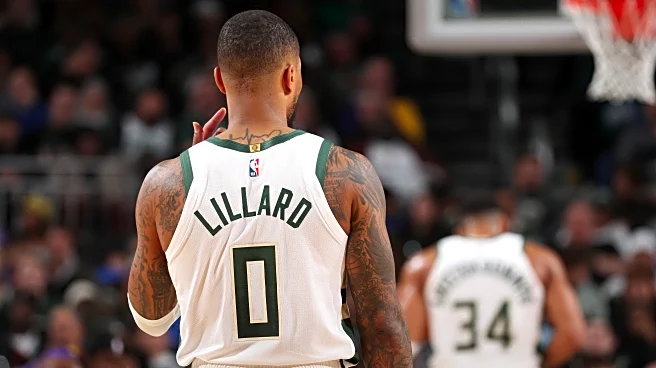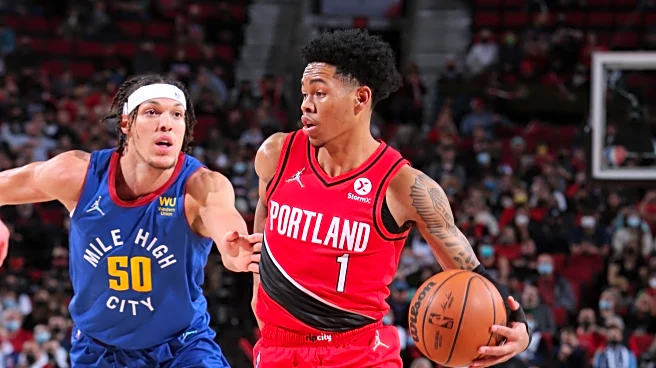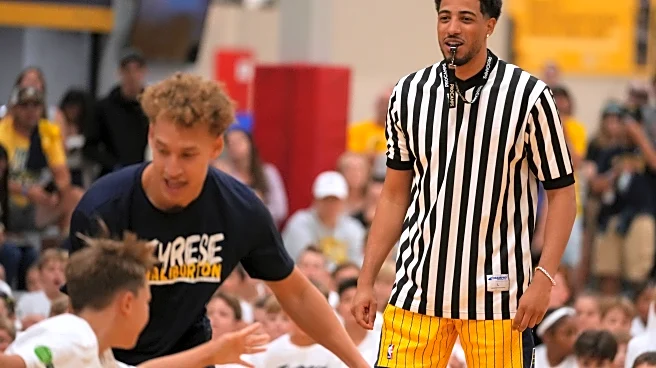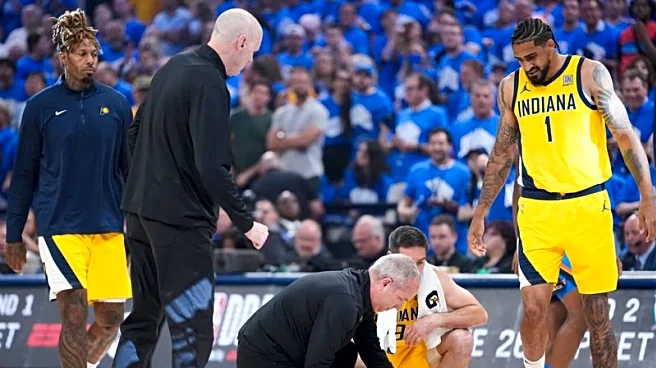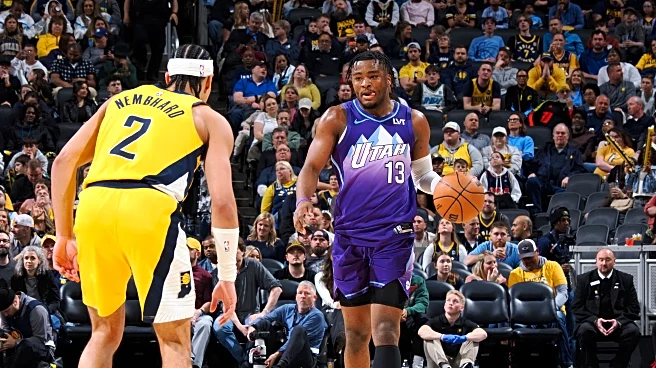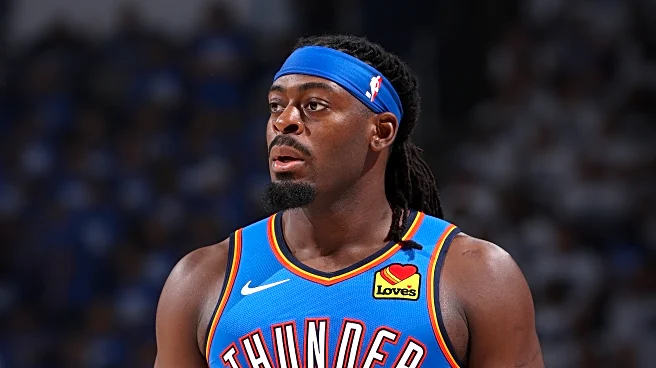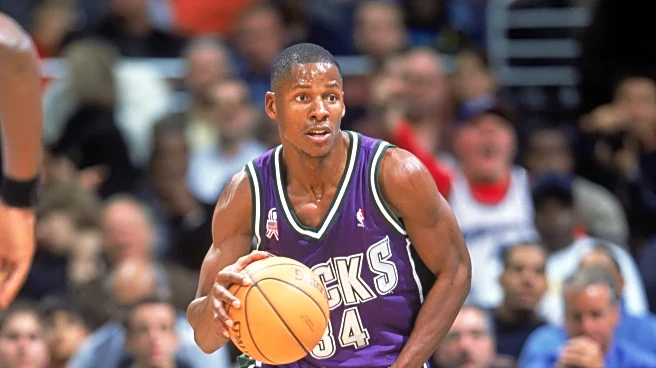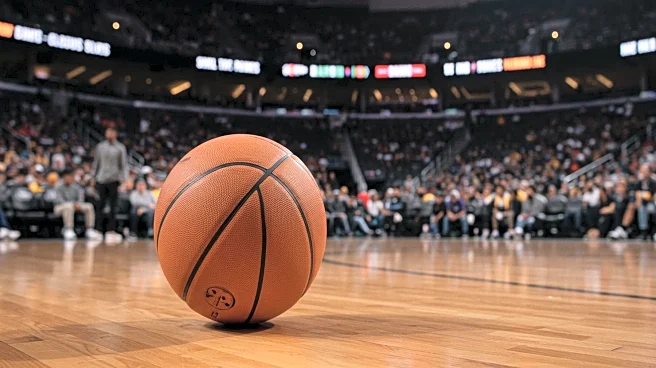
The final chapter of this point guard deep dive is here. In Chapter 1, I discussed weak link theory through an alternate lens, a lens in which the theory is applied to players who are elite at one end of the court but can struggle mightily on the other. This has been a problem the Bucks have dealt with for the past seven seasons with each of the three PGs to don the jersey during that time. Then in Chapter 2, the conversation shifted to Jrue Holiday, where I used all sorts of data to debate if the trade
“paid off.” In Chapter 3, I’ll conclude by taking stock of Damian Lillard’s time wearing Bucks Green. Namely, I consider if the Bucks truly needed Dame’s scoring punch, especially if it meant sacrificing the team’s elite defence. Additionally, I discuss what to make of the last two consecutive injury-riddled playoffs, as well as how a more lateral move on the trade market might have impacted the team’s fate in hindsight. Finally, I’ll conclude with a nod to the NBA Finals, considering how teams can win it all in the current day.
Weak link #3: Damian Lillard

In 2023, Jon Horst made multiple pivots, including trading Jrue Holiday for Damian Lillard. At the time, I viewed the trade as a high-risk/high-reward play that had the potential to increase Milwaukee’s ceiling but would dramatically reduce the team’s floor. I get that Dame’s personal numbers were pretty good, but from a team perspective, I don’t think the ceiling was anywhere close to being reached, and the lowered floor significantly hurt the Bucks. I’ll plant my flag and say I don’t think this trade was a success (maybe not a hot take?), nor would it have been even if injuries hadn’t hit. Look, I guess I understand trading Jrue if the belief was that his regular season shooting efficiency, for whatever reason, would never translate to the postseason. However, despite my deep appreciation for Dame’s commitment to the Bucks during his time with the franchise, the more research I did, the more I believed the team traded for a player they 1. didn’t desperately need and 2. couldn’t maximise, while sacrificing the traits they hung their hat on in the process. Maybe this is too simple a way of looking at the trade, but in a vacuum, I see it like this: Horst traded Milwaukee’s defensive ace, who had been bad on offence in the playoffs, for an offensive ace, who had been bad on defence in any setting. Jrue’s defence would always be there, while Dame’s offence (although elite when he was on) was probably more hit-and-miss than fans would’ve expected. The effect of all this is that the exceedingly high floor Milwaukee once had to fall back on was no longer there; hence, they began losing games they never used to lose.
If stats say a team generally must rank highly in the playoffs on both ends to win, and you’re picking one of these players in hopes of achieving that, the question to ask is: which variable out of Jrue’s playoff shooting or Dame’s defence has more upside to improve? To me, the answer is Jrue almost by default. And to be clear, it’s not like either variable is necessarily likely to improve! But I view it in a binary sense: one might improve, the other categorically will not. By keeping Jrue, the outcome of maintaining an elite defence (and hoping the offence was good enough in the playoffs) remained imminently possible. By acquiring Dame (as outlined in a paragraph below), you are, on some level, willingly renouncing the team’s defensive dominance and hoping to shift the team’s identity to one of offensive dominance. Betting on a team being able to rewire itself like that is fraught with danger, as fans learned over the past two seasons. P.S. Getting into the nitty-gritty of why the team couldn’t rewire itself is another article for another day. That said, if I were to try to summarise my best answer into one sentence, I would posit that the front office incorrectly evaluated 1. the severity of some of the lesser-appreciated weaknesses of Milwaukee’s core players and 2. how those weaknesses would affect Dame’s strengths; I’ll leave it at that.
I contend that if Horst couldn’t trade Jrue for someone who 1. was around his level as a defender and 2. met the minimum requirement of being a dependable catch-and-shoot guy and secondary creator (preferably having shown that in the playoffs as well), then his best bet was to keep Holiday and hope the playoff shooting improved. After all, it wasn’t like Jrue had never shown an ability to shoot efficiently the way, I don’t know, Tony Allen hadn’t; Holiday is a career 37.0% three-point shooter in the regular season! Nevertheless, the trade was made, and the logic behind it was to surround Lillard with competent two-way players—thus retaining some remnants of that elite defence—and then improve significantly in the playoffs on offence. Now, I should note that while the frontcourt of Giannis and Brook remained, Dame didn’t exactly have the best defensive backup as far as wings and guards go; thus, the “ideal” defensive plan never quite got off the ground. That is to say, fans don’t definitively know the answer to “could Milwaukee’s defence have been championship-level with Dame if they had covered every other base?” because the Bucks didn’t “cover every other base.”
That said, it’s worth noting that the Blazers tried this same defensive strategy with Dame and were also unable to achieve a consistent championship-level defence. Portland initially tried insulating Dame (and CJ McCollum) with the likes of Al-Farouq Aminu, Maurice Harkless, and Evan Turner; then, they shipped McCollum out and tried again with Jerami Grant, Josh Hart, and Gary Payton II. Now, I accept that Jusuf Nurkić remained the team’s centre through most of this, which wasn’t ideal defensively, but he was a key screening partner for Lillard, so I get staying with him on some level. Regardless, the facts are that in his 11 years in the Pacific Northwest, Dame was part of a team that ranked from fifth to 10th on defence twice, and never inside the top five (sixth in 2017-18 and ninth in 2014-15). Contrarily, he played on five teams that ranked 25th or lower. Not that a team’s poor defensive rating in a given year automatically means a key player within that team is a poor defender. However, when a clear trend emerges over a decade, it’s evident that the individual players within that team hold some level of culpability.
Moreover, suppose you want to use advanced stats as evidence of Dame’s individual defensive foibles—which I know aren’t always reliable at measuring individual defensive value—you can look at DBPM. For context, a player with a 0.0 DBPM is said to be performing at an average level defensively. Lillard had a -0.8 DBPM in 11 regular seasons in Portland, Holiday had a 0.3 DBPM in three seasons in Milwaukee, and Giannis has a career 2.2 DBPM. Most importantly, though, when you pair these stats with the eye test—which is widely known to be more reliable than advanced stats for this purpose—I feel comfortable concluding that crafting a great team defence with Lillard is very difficult. It’s not just the fact that Dame is 6’2” and 195 pounds; he’s also always been a poor processor of the game on the defensive end. On-ball and off-ball, Lillard is tough to scheme around. Again, data shows that having a great defence is basically a prerequisite to winning a title, which makes the Lillard acquisition confusing on some level. The front office mortgaged another chunk of the team’s future for a player who has proven, through a fair sample size of quantitative and qualitative data, to place something of a hard ceiling on his team’s ability to achieve that title-winning prerequisite.
With all that said, I do want to note for complete transparency that there have been some notable exceptions to this rule, such as Denver’s title-winning team that finished the 2022-23 regular season 15th on defence; however, they rose all the way to fourth in the playoffs. Take from that what you will, but my theory as to how such a defensive transformation was possible is that 1. some breaks possibly went their way with matchups, and 2. I view Nikola Jokić (the Nuggets’ worst defender) as a decent amount better than Lillard (the Bucks’ worst defender). To me, Nikola’s IQ and brute strength separate him from Dame, making it easier to scheme around his athleticism concerns in the playoffs than it is to mask Dame’s deficiencies. In addition, I reckon the defensive infrastructure around Jokić during that season pretty easily surpasses what Dame had around over the past two years. Finally, there’s the Occam’s razor of it all: the Serbian big man seems to increase his effort level in the playoffs compared to the regular season. All of that is to say, I don’t think a Nuggets-esque defensive transformation would’ve been on the cards for the Bucks even if they had been healthy for the last two playoff runs.
The tragic unknown

As far as improving the playoff offence with Dame goes, I suppose it’s safe to assume that bet would have paid off, but Bucks fans will never truly know due to the severe injuries he and Giannis suffered over the past two seasons. Nonetheless, we can at least compare apples to apples and derive information about how the Dame Bucks improved or got worse in the regular season compared to the Jrue (and Bledsoe) Bucks:
| Season | Offence | Defence |
|---|---|---|
| 2024-25 (Lillard) | 115.1 (10th) | 112.7 (12th) |
| 2023-24 (Lillard) | 117.6 (6th) | 115.0 (19th) |
| 2022-23 (Holiday) | 114.3 (15th) | 110.9 (4th) |
| 2021-22 (Holiday) | 114.3 (3rd) | 111.1 (14th) |
| 2020-21 (Holiday) | 116.5 (5th) | 110.7 (9th) |
| 2019-20 (Bledsoe) | 111.9 (8th) | 102.5 (1st) |
| 2018-19 (Bledsoe) | 113.5 (4th) | 104.9 (1st) |
As you can see, the regular season defence with Lillard was horrible in year one and improved in year two (albeit still not on the level of a contender). Granted, the team’s defensive slippage can’t be blamed entirely on Dame; other factors had an influence, such as some of Adrian Griffin’s strange defensive tactics before he was fired. The key piece of information that I took from the chart, though, is that Milwaukee’s offence was never “broken” with Holiday (or Bledsoe). From 2018 to 2023, the Bucks finished just one regular season (2022-23) with an offence that ranked below eighth (and Khris Middleton appeared in just 33 games that season), which calls into question why the front office would be so infatuated with a one-way player like Dame. The playoff offence from 2018-2023 ranked fourth, eighth, 11th, 15th, and sixth. There are some good and bad results in there, but no objective evidence of a clear downward trend, especially when you contextualise some of those numbers.
For example, that 15th-placed finish in the 2021-22 playoffs occurred with no Khris Middleton for (basically) the whole run because he sprained his MCL two games in. Yet, because of their first-placed defence, they were still one game away from making the Eastern Conference Finals that year. Even the following playoffs—when the Bucks finished an impressive sixth on offence (albeit on a tiny sample size), but their defence was horrible (15th)—must also be contextualised by factors outside the team’s control. Firstly, Giannis missed two and a half of those games with a back injury (and clearly wasn’t right for Games 4 and 5); secondly, Middleton wasn’t moving right that whole series, which was all but confirmed with him getting knee surgery that offseason. Plus, the eight-seed Milwaukee “embarrassingly” lost to in the first round—having led in the fourth quarters of Games 4 and 5 by 14 and 16 points, respectively—made it to the NBA Finals!
And don’t get me wrong, choking Games 4 and 5 away was embarrassing—humiliating, even—and the Bucks should have won those games. But that Heat team was pretty damn good, man. Looking back, what a sliding doors moment that was; how might the Bucks not losing those games (in that round) have changed the team’s current situation? Do they win that series and make it to the NBA Finals in 2023? All of this only adds to the case that the front office may have been jumping at shadows by trading Jrue for a player who could not be more opposite than him. Now, I fully acknowledge that Holiday really struggled to make shots in the playoffs, and I do believe that may have been cause for a personnel change of some magnitude if the right guy became available. But in hindsight, trading for a player of Lillard’s archetype seems like a considerable overcorrection to solve a perceived weakness that, you could credibly argue, was nowhere near as severe as the front office seemingly believed it to be.
The road not taken

Allow me to pose the following counterfactual: would the Bucks have had more success if they had traded for a “lesser player” in Fred VanVleet instead of a renowned superstar in Damian Lillard? I’ll use this example because the Bucks reportedly explored a trade with the Raptors at the 2023 deadline to acquire Fred. Realistic or not, it’s at least interesting to consider how more of a lateral move might have changed the Bucks’ destiny over the past two seasons. While VanVleet has nowhere near the résumé of Holiday, he is an accurate example of the player type I was describing above in that he has at least some comparable defensive traits to Jrue—namely his strength and defensive IQ—who is also a dependable three-point shooter (in the regular season and the playoffs, notably) with secondary creator ability. Plus, Horst likely wouldn’t have had to give up as much capital to get him.
Don’t get too hung up on this very comparison, though; I just used it because there was real reporting behind it. There are a lot of other names you could throw out. Ultimately, I’m just making a point about the type of player the Bucks seemingly needed versus the player they went all-in to get. This wasn’t some Orlando-style situation where the team couldn’t put points on the board and needed an explosive scorer like it needed to breathe. Sure, guys missed a bunch of makeable shots in the postseason; that’s not necessarily evidence of bad process, though. As the chart in the above section shows, that same process produced a bunch of highly potent offences in the regular season. Yes, obligatory nod to the “playoff basketball is different than regular season basketball” POV, but the two are not so different that such radical change was needed.
The luxury that having Giannis affords you—and the primary reason why the Bucks had become so dominant in the first place—is that he can generate most of the offence and is also a great defender, which allows you to build out the rest of the team with a defensive slant. Now, I acknowledge that having a dynamic scorer alongside Giannis was something of a missing piece for the team, considering how much Khris Middleton dealt with injuries following the title. But to me, trying to acquire that player at the risk of their bread and butter was short-sighted. If Horst was willing to part ways with another three years of picks and wanted to “star hunt” for an explosive scorer, it’s fair to argue that he should’ve had a firm requirement that the player be adequate on defence as well. If that player wasn’t available, I think the high floor of the existing team was still worth betting on. To use an analogy, “the car didn’t need replacing, it just needed a service.”
Concluding with a nod to the NBA Finals

In closing, it’s clear that the teams that win titles succeed on both ends. To succeed on both ends, it’s becoming increasingly necessary to eliminate players who can’t hold up at one end (even if they are prolific on the other). This is weak link theory in action, and I think it prompts larger conversations in the future as to whether one-way players will essentially become extinct as key pieces on teams. Just watch last season’s NBA Finals as evidence of this. I’m not sure how to adequately describe the level of physicality, but absolutely everything—getting open, dribbling, setting a screen—was a war in and of itself. That all would’ve gone away the second a poor defender or shooter was subbed in, which is why neither coach dared to do so (barring the occasional Thomas Bryant minutes, respectfully).
Seriously, look back at OKC’s rotation: Shai Gilgeous-Alexander, Jalen Williams, Luguentz Dort, Chet Holmgren, Isaiah Hartenstein, Alex Caruso, Cason Wallace, and Aaron Wiggins. Although some of those players played shorter minutes, I feel confident in asserting that none of them would be considered a weak link on either end in a playoff series. But even if you want to quibble with how true that really is for the Thunder’s supporting pieces like Wallace and Wiggins, it as definitely true for the core of that group, which, as I discussed in Chapter 1, is what differentiates the Thunder from the Bucks (along with a heap of other teams, to be fair).
And although Indiana didn’t have the bevy of elite individual defenders OKC had, they still ended up second in playoff defensive rating (behind the Thunder). Why? Because while the Pacers certainly had a few elite defenders of their own in Andrew Nembhard and Aaron Nesmith, even the players opponents looked to “target” are not defensive weak links; they give elite effort and understand how to do their job within a given scheme—sorry, but I cannot say the same for Lillard. For example, Tyrese Haliburton is light and can get overpowered from time to time, but 1. his height and length naturally help to raise his defensive floor, and 2. he has improved significantly at maxing out on the mental side of the game and not making mistakes with his footwork, positioning, etc. Haliburton has surpassed the point of being a circuit breaker for the rest of Indy’s defence.
Honestly, I think “circuit breaker” is going to become the bar moving forward for players on both ends; you must keep your head above water and not be the reason the offence or defence splinters. Anything below that, and the juice just might not be worth the squeeze anymore. Unfortunately, Milwaukee has spent the last seven years dealing with circuit breakers (to varying degrees in varying moments) at the point guard position. Due to Horst’s continued aggressiveness, the front office now faces a tricky predicament regarding how they operate moving forward with limited assets. I think it’s safe to say the Bucks GM has one more big move in him. If Horst does go again (and in no way should that be a fait accompli), it could well be the most consequential move of his Bucks tenure. Get it right, and the window to another title could spring wide open; get it wrong, and the team could be left in the wilderness for longer than any of us fans want to think about. Considering the past, keeping weak link theory top of mind when making that decision would be well advised.
I hope readers enjoyed this series, whether you agreed with my takes or not. Although this series may have seemed like I was just bashing the Bucks’ point guards for the last seven years because of the inherent focus on the negatives of each player in this series, I certainly did not intend for it to come off that way. I found it fascinating (and frustrating) that the team has struggled to find the right balance between offence and defence at the PG position since becoming title contenders in 2018, which is why I wanted to write about it. It goes without saying that all three of Bledsoe, Holiday, and Lillard were excellent teammates and community members throughout their time in the Cream City, and I wish them well in the future.
